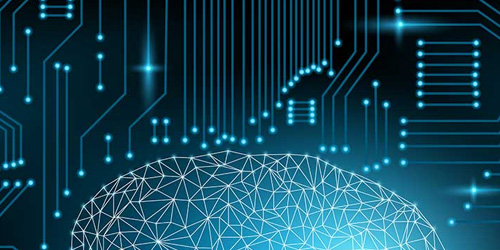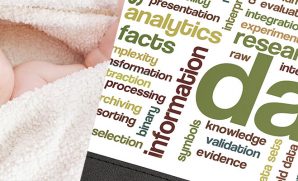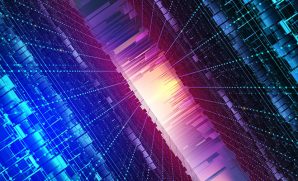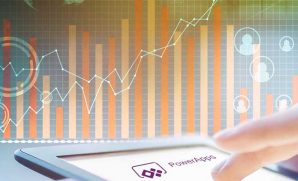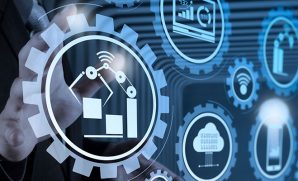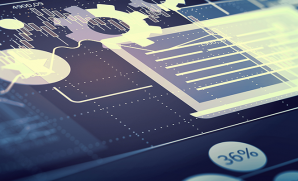Demystifying Artificial Intelligence, Machine Learning and Data Science
Publish Date: July 26, 2019In today’s data driven business world, catchphrases like data analytics, data science (DS), artificial intelligence (AI), machine learning (ML) and deep learning (DL) are terms swirling around boardroom discussions. These digital concepts are increasingly becoming imperative for CIOs and IT leaders in critical decision-making process. Often times these terminologies are loosely or interchangeably referred, without deciphering the real meaning and how individually and collectively they impact businesses. In order to exploit the true potential of these technologies, it is critical for companies to demystify the ambiguity surrounding them.
In this blog, we attempt to demystify the terminologies, explain the comprehensiveness of what data science and data analytics is, what artificial intelligence (AI) embodies, and how technologies like Machine Leaning (ML) and Deep Learning (DL) are evolving fast, stimulating AI adoption on a broader scale. Here, we take you briefly through the natural evolution of these technologies spanning over decades, how we could distinguish one from another in our business conversations and how today they interact and correlate with each other to digitally transform the current business landscape.
The foundation of modern-day digitization – Big data vs. Analytics vs. Data Science
Since the invention of computers to the internet boom, to proliferation of mobile technology, we have witnessed an unprecedented rise in the volume of information or data over decades, leading to the inception of the concept of Big data, as we know it today. In simple term, it represents all structured, semi-structured and unstructured information found in the internet. The process of deriving meaningful insights from these different datasets is what we refer to as big data analytics. Over the years, analytics has so deeply integrated into the fabric of our business lives that today we barely realize its ubiquity in all our decision-making process.
However, with further data explosion, traditional data analysis techniques proved to be inadequate. The increasing volume of unstructured data required specialized data modeling techniques, tools, and systems to extract insights and information. This is where data science came into play constantly pushing the edge of our ever-evolving analytical capabilities. Data science is a scientific approach which applies mathematical and statistical ideas and computer tools for processing big data. It is considered as an interdisciplinary field that brings together statistics, algorithms, mathematics, intelligent data capture techniques, data cleansing, mining and programming to prepare and align big data for intelligent analysis to extract knowledge or insights from big data. It creates hypothesis, tests, evaluates and extracts insights from data sets and models data for advanced analytical capabilities like machine-learning and deep learning (illustrated below). In crux, data science is an inseparable part of big data and analytics that aids in smart decision making.
The next phase of progression – Artificial Intelligence, Machine Learning and Deep learning
Now that we have set the premise of the fundamentals of digital technology, lets dwell deep to understand the most intriguing topics of our times – Artificial Intelligence (AI), Machine Learning (ML) and Deep learning (DL) and how they fit into the broader scheme of analytics and data science.
The three terms AI, ML and DL are intertwined yet distinct as represented in the graph below. In a nutshell, AI is an all-encompassing concept designed to enable machines mimic human intelligence. This was followed by evolution of Machine Learning (ML), a subset of AI and thereafter Deep learning (DL) a sub-set of ML, that together brings a whole different dimension to AI functionalities. Let’s break down further to understand these terminologies in context to our every lives and business environment.
AI is based on human-generated, pre-programmed set of rules to enable machines undertake tasks independently of humans. This may include anything from moving or manipulating objects, recognizing movement or problem-solving. Smart email categorization, Amazon Purchase predict, classifying images on Pinterest etc. are few early AI examples.
Machine Learning is a method of enhancing the AI capabilities by using numerical and statistical approaches to teach computers the ability to do a task with data without explicit programming. It seeks to provide knowledge to computers through data, observations and interacting with the world that in turn allow computers to correctly generalize to new settings.
The fundamental difference between AI and ML, as stated above, is that AI is governed by pre-configured rules defined by humans; while with ML, computers are empowered to self-learn and make decisions without the need for explicit programming.
The evolution of ML in AI has brought a paradigm shift to data analytics and data science. While ML is indeed a sub-set of AI, in reality it defines the way we know AI today. ML powered AI is permeating into our everyday lives in a nuanced way.
From using a smart assistant like Google Assistant, Alexa, Siri, or Bixby; to using mobile phone apps with features like scene detection, mixed and virtual reality elements, and more; to feeds or notifications from different apps / tools, everything is curated by ML. Did you know when you are using a Google or Apple Maps for navigating, or calling an Uber, or booking a flight ticket, ML based AI is at play? When you are calling an Uber, both the pricing and the car that matches your ride request is decided by ML. AI takes all your past behavior, web searches, interactions, and everything else that you do when you are on these websites and tailors the experience for you. The online ad industry or the recommendation algorithm by Amazon and Netflix uses AI to track user statistics to personalize our ad and our recommendation experience.
Deep Learning (DL), is a relatively new concept that represents the next evolution of ML. Built on a hierarchy of multi-layered artificial neural networks, deep learning enables computers to analyze data in a structure much like the human brain. In contrast to ML which required manual intervention, DL enables machines to automatically learn/extract/translate the features from data sets such as images, video or text. It delivers high accuracy in tasks such as object detection, speech recognition, language translation and other recent breakthroughs. There are tons of DL concepts in development in area of automatic text generation, image caption generation, news aggregators based on sentiments, language recognition and translation and many more. Autonomous vehicles, robotics, predictions of weather, precision medicine are some of the path breaking concepts of DL.
How does it impact your enterprise?
The profound impact of the above technologies is irrefutable. From improving your customer relationship with analytics, automation and chatbots; to providing accurate supply chain forecast, reduce operational overhead, predict equipment failures for manufacturers; to providing real-time statistics, predictive insights, recommendations to drive sales, the benefits are infinite; thereby accelerating decision-making and providing a competitive advantage to businesses.
However, being cognizant of the differences in offering will give you an edge to reap maximum benefits from each individually and collectively. A vague knowledge can cause confusion in requirement of data science capabilities vs. AI capabilities that can corrupt your whole business roadmap.
For example, if you are seeking for data science capabilities, you are actually looking for functionalities around data architecture, data acquisition, data analysis and data archiving. Bottomline is that DS manipulates and analyses data and is used in various other fields such as statistics, machine Learning, visualization, etc.
Artificial intelligence on the other hand is a personification of human intelligence. The evolving subsets of AI, Machine learning (ML), Deep Learning (DL), Neural Networks (NN) are providing the edge and finesse to make it more like human and even better in some aspects. So, when you are seeking for AI applications, that could be anything ranging from robotic process automation (RPA), optical character recognition (OCR), workflow (Business Process Management), chatbots (NLP), human-in-the-loop cognitive processing, virtual employees, auto ML etc.
Having a clarity on what these overlapping yet distinct concepts entail, will immensely contribute in devising a compelling digital strategy suitable for your business. Additionally, it will help you choose an appropriate external partner with the ability to demonstrate deeper knowledge and experience and the expertise to help you realize real tangible business outcomes from your digital investment.
Check out our offerings, to further explore the infinite possibilities with artificial intelligence, machine learning and data science.
Reference- https://hbr.org/2012/10/data-scientist-the-sexiest-job-of-the-21st-century






